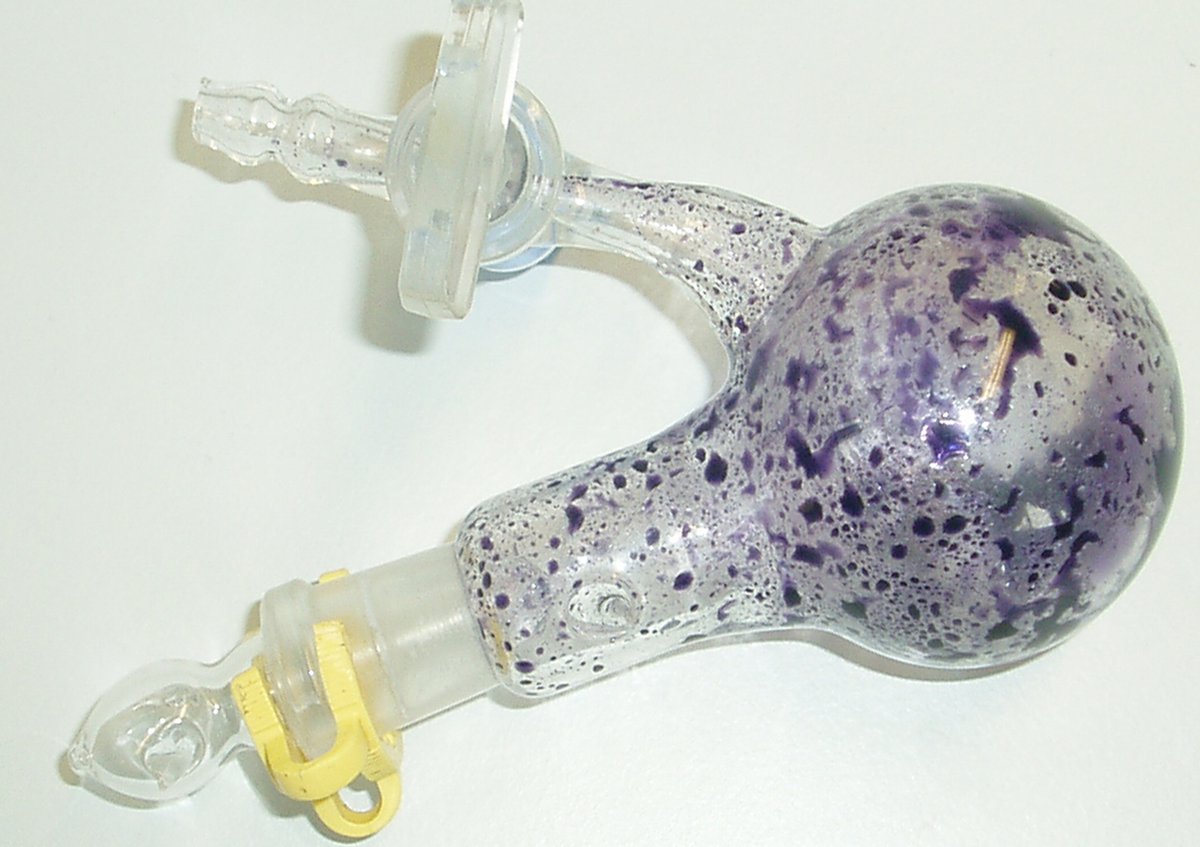Ionic Liquids - Weakly Coordinating Anions
We are interested in the synthesis and characterization of new Ionic Liquids (salt with a melting point < 100°C). The key to ILs is
- delocalization of charge
- symmetry decrease
- large conformational space
Delocalization is achieved by the utilization of weakly coordinating anions. Hence, our research has mainly focused on the preparation of new resonance stabilized methanides and amides as well as the anion design.
Moreover, we use ILs as (unusual) reaction media for the synthesis of novel pseudohalogen compounds. For example, the utilization of Ionic Liquids (ILs) with non-innocent anions and cations leads to new pseudohalogen borates, silicates and phosphates.
As non-innocent anions are used either decomposable ions such as carbonates, borates, silicates and phosphates or the highly nucleophilic (pseudo)halides, which also form ILs with corresponding organic cations.
Resonance stabilized Methanides
- can be considered as pseudohalogens
- examples: dinitrosomethanides (DNM) or nitronitrosocyanmethanides (NNCM)
- via pure potassium salts all other alkali or ammonium salts (DNM or NNCM) can be obtained by ion exchange or release of the methyl nitrosolic acid
- structure: resonance-stabilized, nonlinear pseudohalides, most are planar or nearly planar, different types of environment of the carbon atom: pyramidal, almost planar or propeller type with almost trigonal planar environment
- bonding: fairly short C–NO, C–NO2 and C–CN bond lengths and planarity indicate the presence of over the whole anion delocalized p bonds; DNM: 6p-electron, 5-center bond; NNCM: 10p-electron, 8-center bond
Ionic Liquids based on Resonance-Stabilized Methanides:
- Ionic Liquids of resonance-stabilized methanides can easily be prepared from the alkali salts utilizing the properties of a pseudohalogen
- synthesis: (i) insoluble silver salts in water, (ii) water soluble ethyl(methyl)imidazolium methanide separated from AgBr by filtration
Properties of Methanide Based Ionic Liquids:
- Ionic Liquids of methanides with a bulky organic cation are neither heat nor shock sensitive, and hence can be prepared and stored in large scale
- ILs can also be considered “energetic Ionic Liquids” since the thermodynamically instable methanide anion is only kinetically stabilized by bulky organic cations
- very hygroscopic and immediately absorb water when exposed to air
- experimentally determined melting points varying between –48 °C and 48 °C
Amide based Ionic Liquids
- amides of the type NR1R2 (R1,2 = CHO, NO2, CN – electron withdrawing group) can be regarded as nonlinear resonance stabilized pseudohalides
- readily prepared from the reaction of the amide based pseudohalide potassium salts with imidazolium tetrafluoroborate salts followed by filtration and a specific drying prodecure
- especially the nitrocyanoamide anion with a bulky organic cations are neither heat nor shock sensitive, and can therefore be prepared and stored in large scale
- this type of ILs can also be considered “energetic Ionic Liquids”
- similar to methanides the amides are also very hygroscopic and immediately absorb water when exposed to air
- decomposition temperature of amide based Ionic Liquids ranges, depending on the counterion, between Tdec = 213 °C and 246 °C
- the thermal stability increases along the series EMIM+X– < BMIM+X– < HMIM+X–
- experimentally determined melting points vary between –48 °C and 32 °C
- the number and the strength of interionic interactions (coulomb and hydrogen bonding) as well as the size of the ions is responsible for the fairly wide range of observed melting points
- So far we have not been able to crystallize any of the discussed Ionic Liquids without solvent; solidification resulted only in glass formation, a well-known phenomenon of Ionic Liquids
Anion Design
- according to Grimm´s hydride displacement law the hydrides of the second row, BH4–, CH3–, NH2–, and OH– can be regarded as formal pseudohalides
- there is a significant difference in the basicity between these pseudohalides and the halides, since halides represent only very weak bases while such formal pseudohalides are strong bases
- successive substitution of the hydrogen atoms in BH4–, CH3– and NH2– by electron-withdrawing groups such as CN leads to the class of resonance-stabilized, nonlinear pseudohalides
- further decrease of basicity depends on the capability of the ecelctron-withdrawing group to delocalize the p-type AO lone
- basicity in B(CN)4–, C(CN)3– and N(CN)2– is strongly decreased by CN substitution, but these anions can not be regarded to be weakly coordinating due to the basic terminal nitrogen atom of the cyano group
- further delocalization of the anion charge (besides the introduction of steric strain) is achieved by adding a strong bulky Lewis acid such as B(C6F5)3
- this approach can be generalized with respect to the Lewis base linker as well as to the bulky Lewis acid

